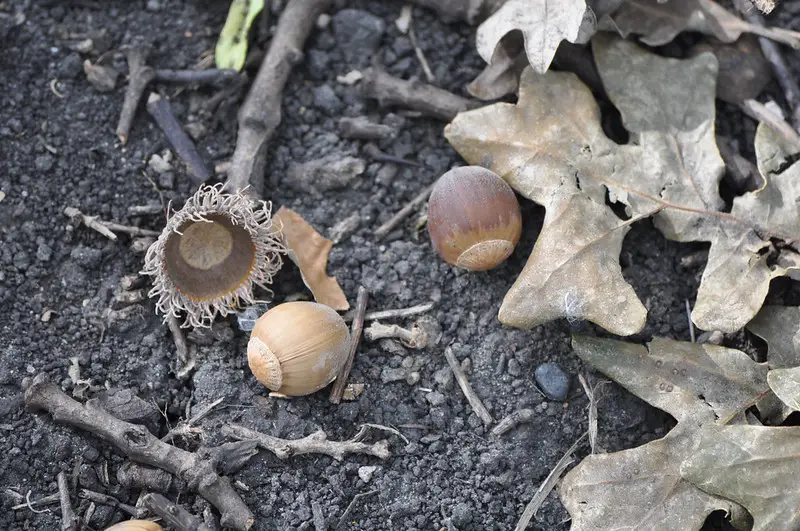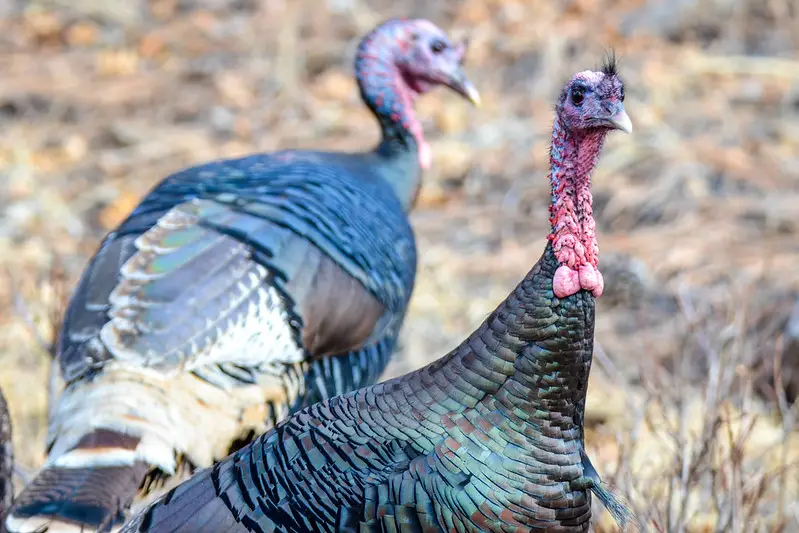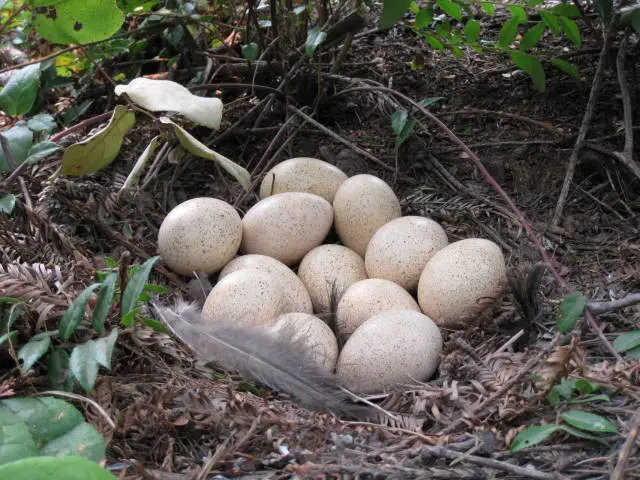
Turkeys are such a unique species. They are significantly larger than most other birds. They walk more than they fly. And while they sleep in a tree, the turkey nest is built on the ground.
As you might imagine, a nest on the ground exposes the turkey and it’s eggs to a number of different hazards. With the recent decline in turkey populations across many states, there has been a renewed focus on the turkey nest. If the life of a turkey starts in the nest, what can we do to protect these nests?
Let’s cover all the questions you might have about turkey nests and figure out what we can do to protect them.
Turkey Nest Logistics
1. Where do turkeys nest?
Wild turkeys nest on the ground, usually in a depression that is dug out by the hen. While hens generally don’t like to nest with foliage hanging over them, they do like to nest next to trees, rocks, logs, briars, or tall grasses that will conceal them while they are on the nest.
Hens like to nest near openings such as fields or logging roads. These allow her to feed without having to range from her nest too far or too long.
Strangely, hens do not like to nest too close to other hens. One reasons for this is that turkeys will actually lay eggs in another turkey’s nest so that the other hen will incubate and raise the egg.
2. What does a turkey nest look like?
A turkey nest will simply look like a small depression in the ground. The hen may add some leaves or grasses during the incubation period. You may also see some turkey feathers mixed in with the eggs.
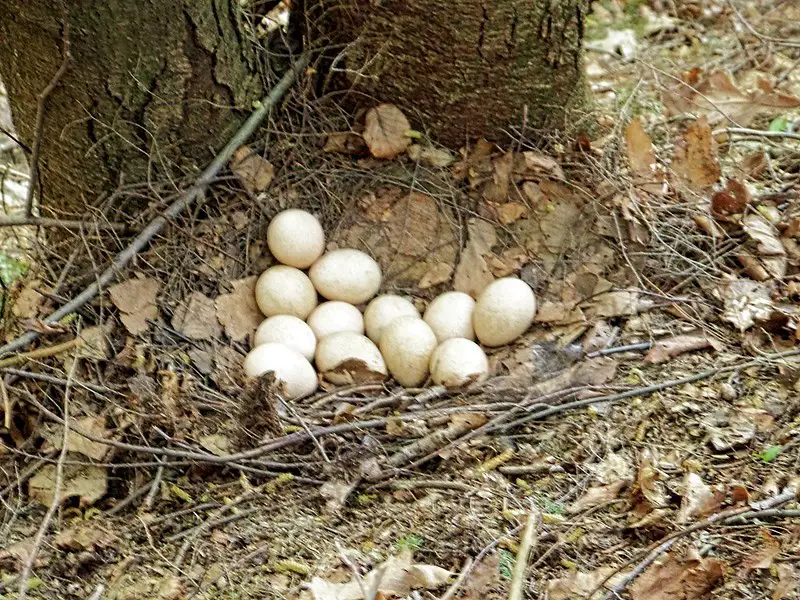
3. Do turkeys stay on the nest at night?
Once a hen turkey begins laying her eggs, she does not roost in a tree until the eggs are laid, incubated, hatched, and the poults can fly up to the roost with her.
Rarely, a hen turkey may fly up to roost early in the laying process. However, once she has most of her clutch laid, she will sleep in the nest.
4. How long does a hen turkey sit on the nest?
The hen turkey sits on the nest for a total of six weeks. This is comprised of a laying and incubation period.
She will lay about one egg a day until she has a full clutch of 10-12 eggs. This process takes about two weeks.
During the laying process, the hen will continue to breed with toms in the area. While a hen can lay a clutch of eggs from just one breeding, it is usually best if she breeds multiple times during the two weeks.
After breeding, the hen stores the sperm in her body. Each egg in the clutch can be from a different tom depending on which sperm was dominant.
After she has laid a full clutch, the hen will sit on the nest for 28 straight days until the eggs hatch. She will only leave for brief periods of time to eat or drink.
5. When do turkeys go to nest?
Turkeys go to nest in the spring. Depending on the geographic region, this could be anytime from February to May. For most areas, it will take place in mid-March to late April.
Theoretically, all the hens in an area should begin to lay at the same time. Because of environmental factors, this usually does not happen. Most hens will have a slightly different time that they start to lay eggs.
Keep in mind that if a hen’s nest is destroyed. She will start the entire breeding cycle over and attempt to renest. This means that she may be sitting on the nest outside the traditional window for nesting in that area.
Turkey Nest Conservation
1. What are the biggest threats to turkey nests?
Raccoons are probably the biggest threat to turkey nests. These omnivores will eat pretty much anything they can get their little hands on. They have a very strong nose which helps them find hens and as a result, the turkey nest.
Raccoons aren’t the only animals looking for an easy, tasty meal. Other nest predators include opossums, skunks, snakes, feral hogs, and crows. You can read more about turkey predators in this article.
2. What does a hen do if her nest is destroyed?
As I mentioned above, if a hen’s nest is destroyed, she will attempt to breed again. After breeding with a tom, she will start to re-nest. This means two more weeks of egg laying and four more weeks of incubation.
Hens that renest typically have a harder time with poult mortality. The later in the year that turkeys are born, the less likely they are to survive.
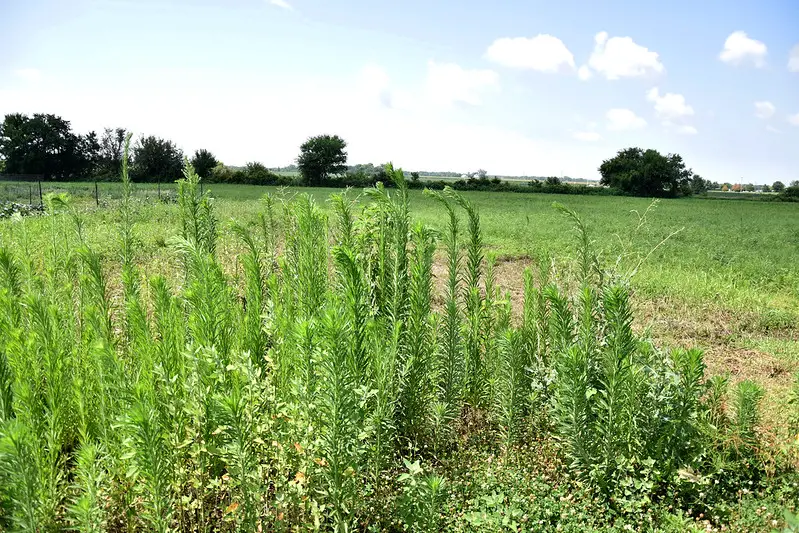
3. What can we do to protect turkey nests?
One of the biggest ways landowners can protect turkey nests is by delaying mowing until late summer. This is beneficial for a number of reasons.
First, the high foliage provides protection from predators giving turkeys more areas to hide and feed in. Second, you do not risk hitting turkey eggs or poults with the mower when you mow in July or August.
Another activity to improve turkey nesting habitat is timber stand improvement. By cutting less beneficial tree species such as sweetgum, you can open up mature hardwood forests to new growth which turkeys prefer for laying and brooding.
Trapping may also provide some benefits. However, there are so many animals that eat turkey eggs, it is going to ever make a dent in the problem. Even if you were able to completely eradicate raccoons, you would still have snakes, hogs, and crows raiding the nests.
Mike Chamberlain, the Turkey Doc, is the country’s top turkey expert. He believes that improving nesting and brooding habitat on your land is one of the best ways we can help the wild turkey. I tend to agree which is why I wrote another article about enhancing turkey habitat. Be sure to read it if you are interested in helping the turkey population and having more spring turkeys on your land.

